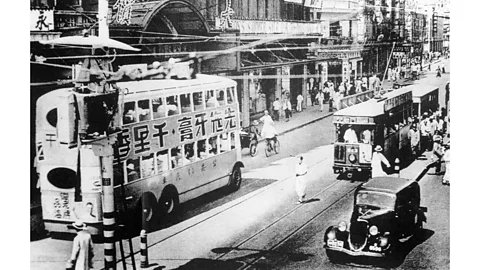How China’s buses shaped the world’s EV revolution
 Getty Images
Getty ImagesIn the 2010s, China rolled out a rapid and widespread electric bus network. Today, China's electric buses are influencing not just the country's EV uptake, but the world's.
There are two distinctive types of electric buses making their way along Nanjing Xi Lu, one of Shanghai's busiest roads.
The first is a fleet of blue trolleybuses that serve bus route number 20, a line set up by a British-run transport company in 1928. They use poles on their roofs to receive electricity from wires overhead and have kept the route running in this way for nearly a century.
But while the historic trolleybuses are a reminder of Europe's past technological innovation, the new buses swooshing alongside them are symbols of China's contemporary net-zero ambition.
These sleek and modern electric buses, powered by lithium batteries not wires, were rolled out in Shanghai in their thousands beginning in 2014. Compared to the once ubiquitous diesel-fuelled buses, which made loud "vroom-vroom" engine sounds and belched out black smoke from their tailpipes, the e-buses dominating Shanghai's streets today are quiet, smoke-free and stylish to look at. They also drive smoothly, particularly when they start and stop.
These sleek buses are now ubiquitous across much of China, but their status as a green transport icon was not always assured. As they shuttle back and forth along their bustling daily routes, these vehicles are having a profound influence on not just China's rapid EV transition, but the world's.
 Getty Images
Getty ImagesAn uphill start
The country's decision to spur the manufacturing and use of e-buses was primarily a strategy for industrial growth, then a part of its efforts to curb air pollution. It was only after the government's 2020 pledge to become carbon neutral before 2060 that promoting electric vehicles has become an important part of its climate goals. Yet it appears to be working.
The most recent data available shows that China in 2018 was still the second largest source of carbon dioxide (CO2) emissions in the global transport sector, responsible for 11%, and behind only the United States, which ed for 21%. However, in order to help reduce transport emissions around the world, the International Energy Agency has called for policies to encourage public transport and electric vehicles – and China's e-bus roll out is helping achieve both.
